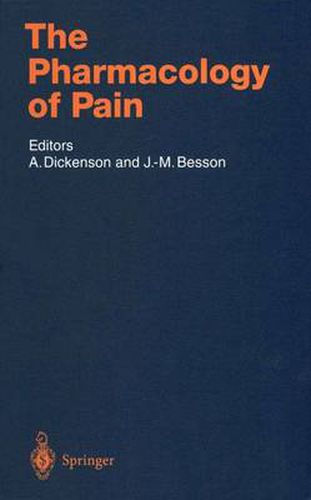Readings Newsletter
Become a Readings Member to make your shopping experience even easier.
Sign in or sign up for free!
You’re not far away from qualifying for FREE standard shipping within Australia
You’ve qualified for FREE standard shipping within Australia
The cart is loading…






This title is printed to order. This book may have been self-published. If so, we cannot guarantee the quality of the content. In the main most books will have gone through the editing process however some may not. We therefore suggest that you be aware of this before ordering this book. If in doubt check either the author or publisher’s details as we are unable to accept any returns unless they are faulty. Please contact us if you have any questions.
Pain is a symptom of many clinical disorders, afflicts a large proportion of the population and is largely treated by pharmacological means. However, the two main classes of drugs used are the opioids and the non-steroidal anti inflammatory drugs, drugs that have a long history. The last decade has seen remarkable advances in our understanding of some of the pharmacological bases of pain and analgesia and this book aims to reflect these rapid changes in our understanding of pain mechanisms. One impetus to these scientific advances has been dialogue and interactions between scientists and clinicians; as a result we now has a number of animal models of clinical pain states, to mimic certain aspects of clinical pathophysiological pain states. Molecular aspects of receptors and the synthesis of tools for probing receptor function have also been rapid growth areas. A number of controlled clinical studies using novel licensed drugs have also resulted from recent research, offering hope to certain patients with severe intractable pain. However, we desperately need the pharmaceutical industry to develop new drugs based on these novel targets for analgesic therapy. This book attempts to provide an overview of the important areas of the pharmacology of pain. This book, although providing an account of the pharmacology of pain transmission and its control based on the underlying anatomical organization and physiological responses, does not attempt to cover these latter two areas.
$9.00 standard shipping within Australia
FREE standard shipping within Australia for orders over $100.00
Express & International shipping calculated at checkout
This title is printed to order. This book may have been self-published. If so, we cannot guarantee the quality of the content. In the main most books will have gone through the editing process however some may not. We therefore suggest that you be aware of this before ordering this book. If in doubt check either the author or publisher’s details as we are unable to accept any returns unless they are faulty. Please contact us if you have any questions.
Pain is a symptom of many clinical disorders, afflicts a large proportion of the population and is largely treated by pharmacological means. However, the two main classes of drugs used are the opioids and the non-steroidal anti inflammatory drugs, drugs that have a long history. The last decade has seen remarkable advances in our understanding of some of the pharmacological bases of pain and analgesia and this book aims to reflect these rapid changes in our understanding of pain mechanisms. One impetus to these scientific advances has been dialogue and interactions between scientists and clinicians; as a result we now has a number of animal models of clinical pain states, to mimic certain aspects of clinical pathophysiological pain states. Molecular aspects of receptors and the synthesis of tools for probing receptor function have also been rapid growth areas. A number of controlled clinical studies using novel licensed drugs have also resulted from recent research, offering hope to certain patients with severe intractable pain. However, we desperately need the pharmaceutical industry to develop new drugs based on these novel targets for analgesic therapy. This book attempts to provide an overview of the important areas of the pharmacology of pain. This book, although providing an account of the pharmacology of pain transmission and its control based on the underlying anatomical organization and physiological responses, does not attempt to cover these latter two areas.